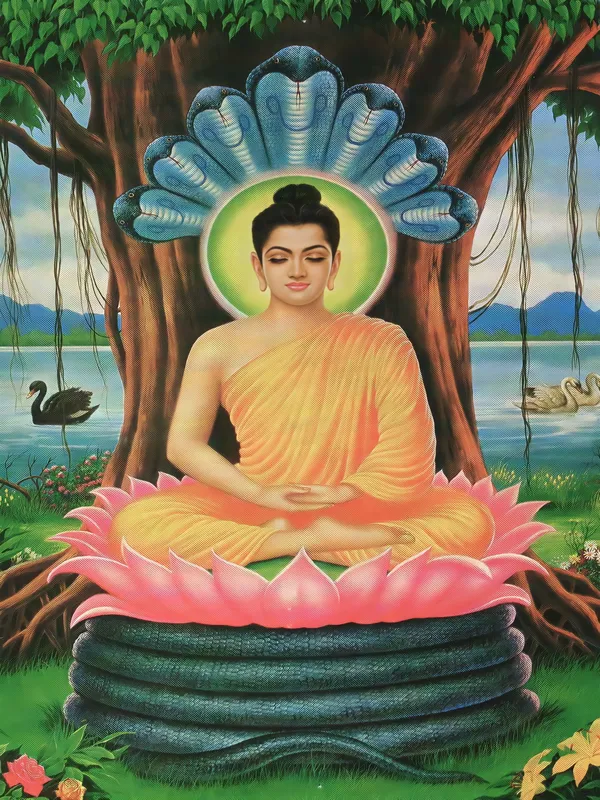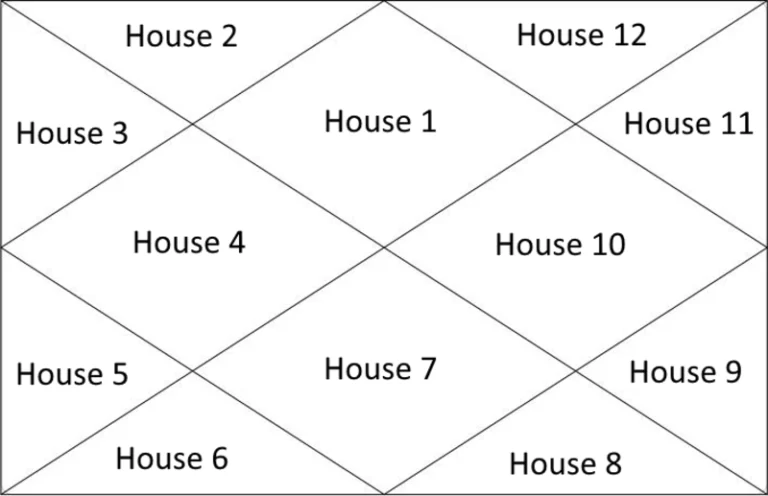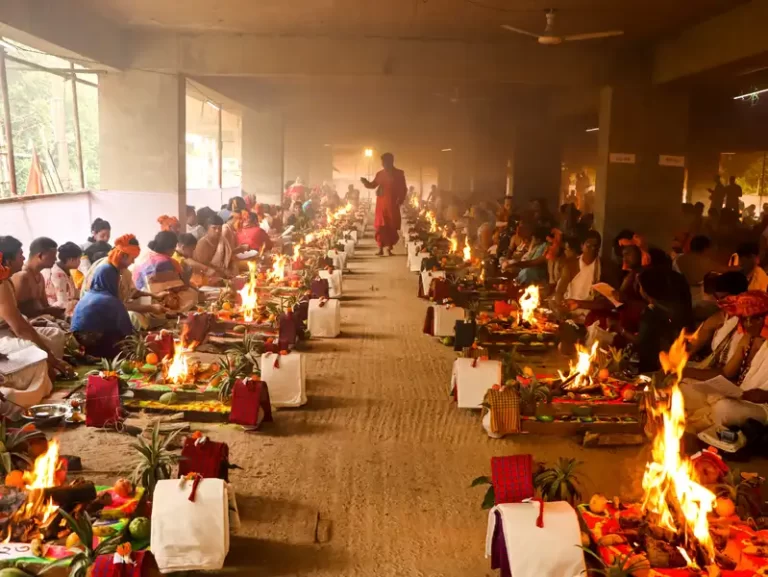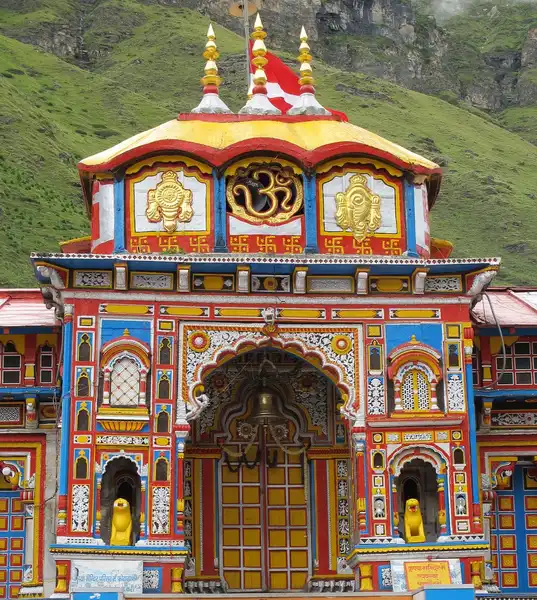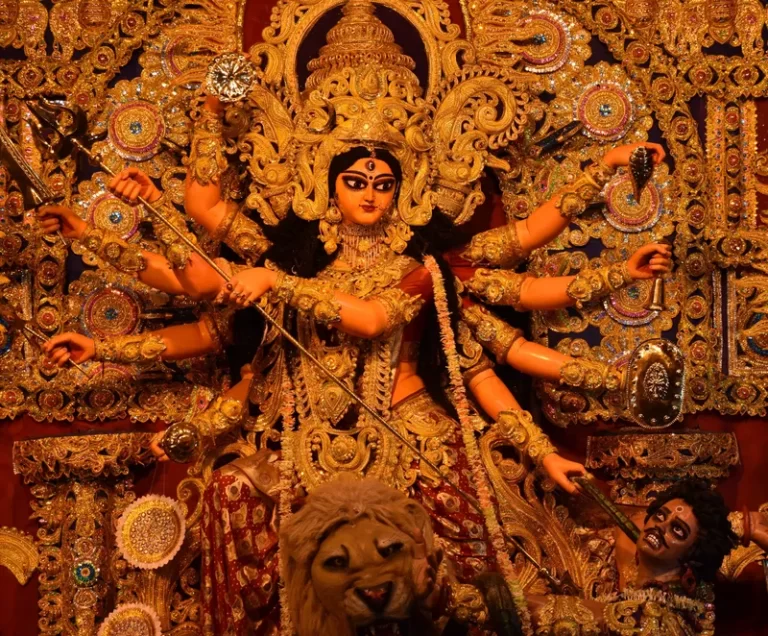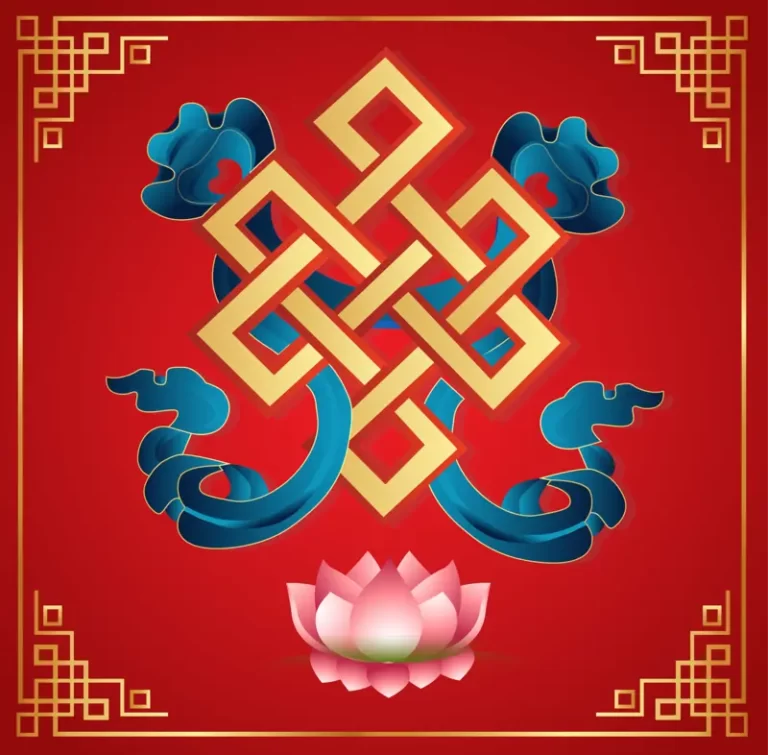Navgrahas: the 9 planets of Vedic Astrology
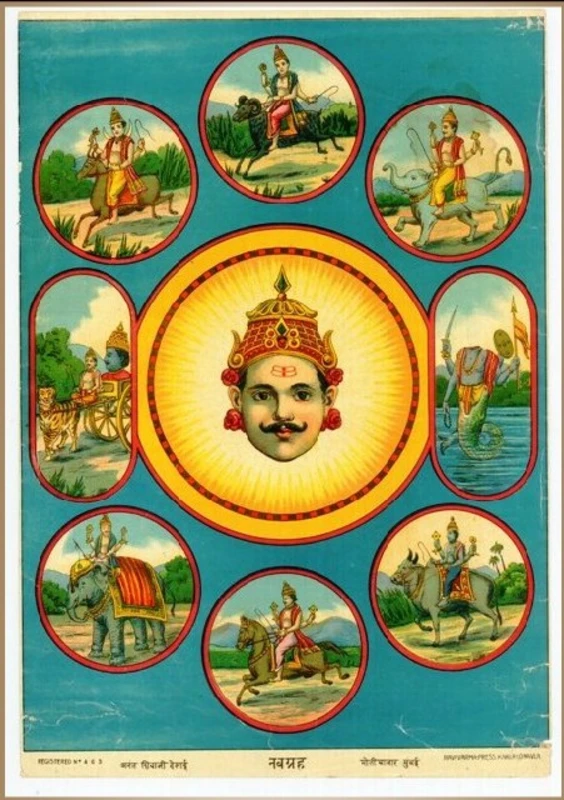
ऊँ ब्रह्मा मुरारी त्रिपुरांतकारी भानु: शशि भूमि सुतो बुधश्च।
गुरुश्च शुक्र शनि राहु केतव सर्वे ग्रहा शांति करा भवंतु।।
May the benevolent existence of the celestial deities Brahma, Murari (Vishnu), and Tripurantkari (Shiva) grace my existence. These divine beings obliterated the Tripurasuras, while the cosmic bodies Bhanu (Sun), Shashi (Moon), Bumisuta (Mars), Buddha (Mercury), Guru (Jupiter), Shukra, Shani, Rahu, and Ketu further embellish the tapestry of my life.
Graha – an Introduction:
Central to astrology are the Grahas, cosmic actors believed to wield influence over life’s facets. In Vedic lore, the Navgrahas, nine sentient planets, emanate distinct energies and frequencies. Each Graha embodies diverse traits — from character to physique, relationships, occupation, riches, health, and spiritual advancement.
Astrologers leverage these Grahas’ celestial choreography during birth to craft a horoscope, mapping their alignment against zodiacs and houses. This chart deciphers life’s essence, propensities, and presages.
The Navgrahas dictate auspicious junctures like nuptials, ventures, and inaugurations. Their cosmic dance guides optimal timings.
In Vedic Jyotish, the Navgrahas encompass Surya, Chandra, Mangal, Budha, Guru, Shukra, Shani, Rahu, and Ketu. Notably, Hindu Vedic Astrology omits Neptune, Uranus, Pluto, and Chiron.
Rahu and Ketu, marking lunar orbit intersections, are esteemed as Grahas.
Navgrahas, envisioned as celestial deities, each bear distinct roles and personas.
Through their positions, Navgrahas unravel Karmic fruits, as per our prior actions, in Dasa periods spotlighted by our Birth Chart.
Table for Synonyms of Navgrahas:
| Graha | Synonyms |
| Sun | Bhanu, Adtitya, Ravi, Prabhakara, Tamohanta, Divakar, Dinakarta, Dinmani, Surya, Heli, Thapan, Pusha, Aruna, Arka etc |
| Moon | Guru, Jeeva, Deva Mantri, Deva Purohita, Devejya, Angirasoonu, Brihaspati, Mantri, Vachaspati, Suracharya, etc |
| Mars | Ara, Vakra, Mahisoonu, Rudhira, Rakta, Angarak, Kroordik, Kroorkit, Kuja, Kshitija, Kroornetra etc |
| Mercury | Saumya, Gna, Buddha, Somaja, Bodhana, Kumar, Prabha Suta, Tharathanya, Vid, Induputra etc |
| Jupiter | Guru, Jeeva, Deva Mantri, Deva Purohita, Devejya, Angirasoonu, Brihaspati, Mantri, Vachaspati, Suracharya etc |
| Venus | Sukra, Bhrigu, Bhrigusuta, Aasphujit, Sita, Usanaa, Daityaguru, Daitya Pujya, Kaam, Kavi, Achcha, Danavejya etc |
| Saturn | Shani, Manda, Kana, Krishna, Suryaputra, Yam, Pangu, Sanaischar, Sauri, Kaal, Chhaya Suta, Asita, Tharanithanaya, Chhaya Sunu, Kona, Arki etc |
| Rahu | Tama, Asura, Agu, Swarbhanu, Vidhuntuda, Ghata, Saimhikya, Bhujag, Bhujang, Sarpa, Phanin, Thamas etc |
| Ketu | Shikhi, Dhwaja, Dhumra, Mrityu Putra, Anil etc |
Sun:
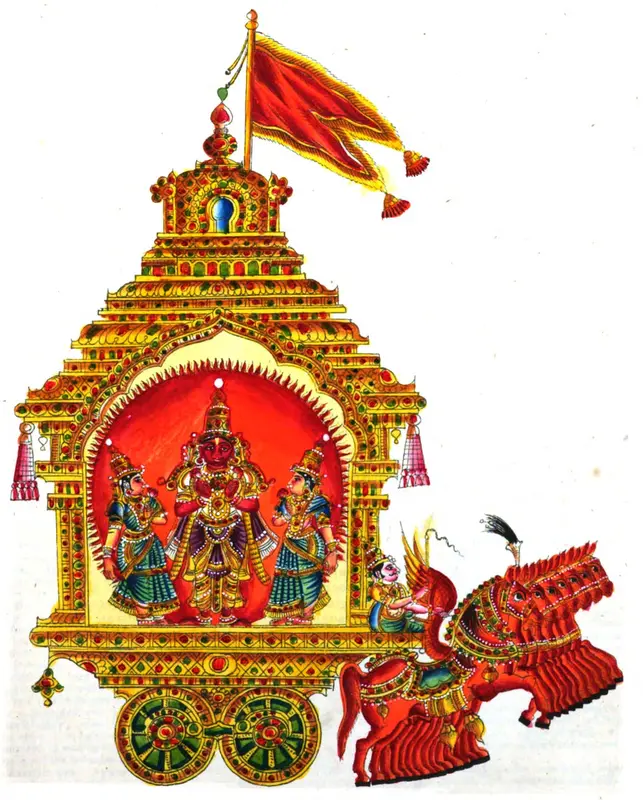
जपाकुसुम संकाशं काश्यपेयं महदद्युतिम् I
तमोरिंसर्वपापघ्नं प्रणतोSस्मि दिवाकरम् II
Hail to thee, O Lord Diwakara, radiant scion of Kashyapa, ablaze like the hibiscus. You banish shadows and annul transgressions, embodying light’s essence.
Surya embodies a square frame, broad shoulders, an oval head, and generous eyes. With a wide forehead and honey-red gaze, Surya wears robes of crimson and gold. Dominated by Agni Tatwa, Pitta Prakriti, and a Satvik Temperament, he exudes unwavering courage and limitless dynamism.
As the guardian of Dharma, Surya symbolizes the Atma (Soul), reigning over the east, Kshatriyas, fathers, governance, and kingship. His domain extends to the right eye, right nostril, Vedas, Yajna, Devtas, and the Sanskrit language.
Surya’s influence graces temples, capital cities, regal palaces, mountain strongholds, and thrones. He’s interwoven with wheat, pepper, ivory, fuel, ruby, the hue of red, copper, and gold.
Moon:
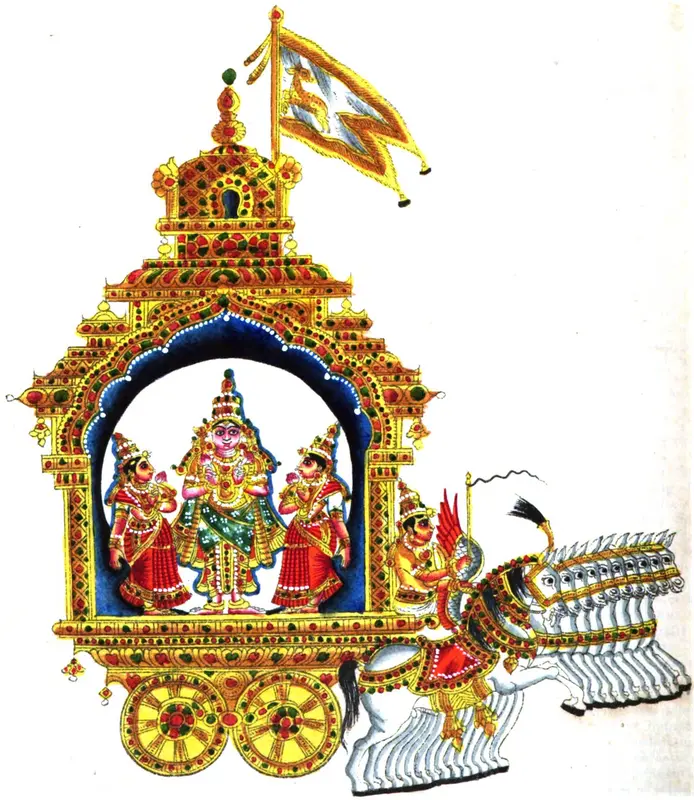
दधिशंखतुषाराभं क्षीरोदार्णव संभवम् I
नमामि शशिनं सोमं शंभोर्मुकुट भूषणम् II
I bow to Chandra, the Moon, glowing resplendently in a white hue reminiscent of curd, conch, and snow. Emerging from the Milky Ocean (Ksheerasagara), he carries a hare emblem on his form. Chandra graces Lord Shiva’s crown as a jewel, embodying illumination and cleansing purity.
Chandra boasts a circular countenance and a moderate build, coupled with a mellifluous voice and captivating, expansive eyes. Clad in white-silver attire, his skin radiates a fair hue. Governed by Jal Tatwa, Vaat-Kapha Prakriti, and a Satvik disposition, Chandra is celebrated for his benevolence and magnanimity.
Chandra’s dominion encompasses the realms of the psyche, feelings, and cogitation. He presides over the North West Direction, Vaisya social class, mothers, goddesses, queens, the left eye, left nostril, and prayers. His sphere extends to everyday actions like repasts, libations, ablutions, cleansing, and agriculture. The moon’s influence reverberates in entities such as pearls, bell metal, milk, ghee, rice, fish, sandalwood, cattle, medicinal herbs, and sugar.
Mars:
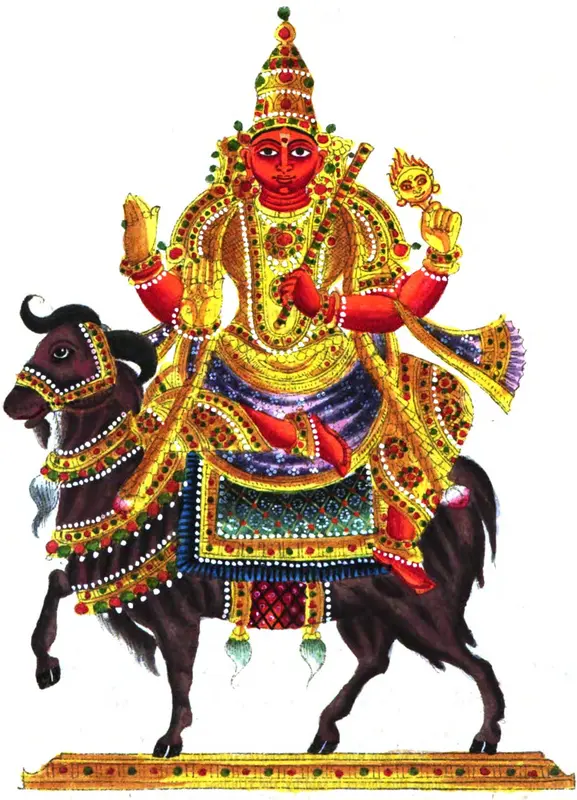
धरणीगर्भ संभूतं विद्युत्कांति समप्रभम् I
कुमारं शक्तिहस्तं तं मंगलं प्रणाम्यहम् II
I pay homage to Lord Mangal (Mars), emerging from the very Earth, radiating like a celestial lightning bolt, wielding divine might within his grasp.
Mars stands tall, lean yet potent, exuding an aggressive energy. With penetrating crimson eyes and a youthful countenance, he often dons apparel in shades of red or saffron. Mars is aligned with the Fire element, Pitta prakriti, and Tamas guna, epitomizing intensity, martial prowess, and combat mastery. He stands sentinel for the homeland, bearing an affinity for the land and its cultivation.
Mars embodies valor and audacity, facing the south, and intertwining with the Kshatriya caste, army leaders, siblings, warriors, law enforcement, sentinels, tillers, and others. His realm extends over lands, dwellings, realty, construction, and labor supervision, spanning fire, metallurgy, and weaponry. Mars finds representation in red coral, monkeys, bricks and tiles, kerosene, matches, gunpowder, and similar elements.
Mercury:
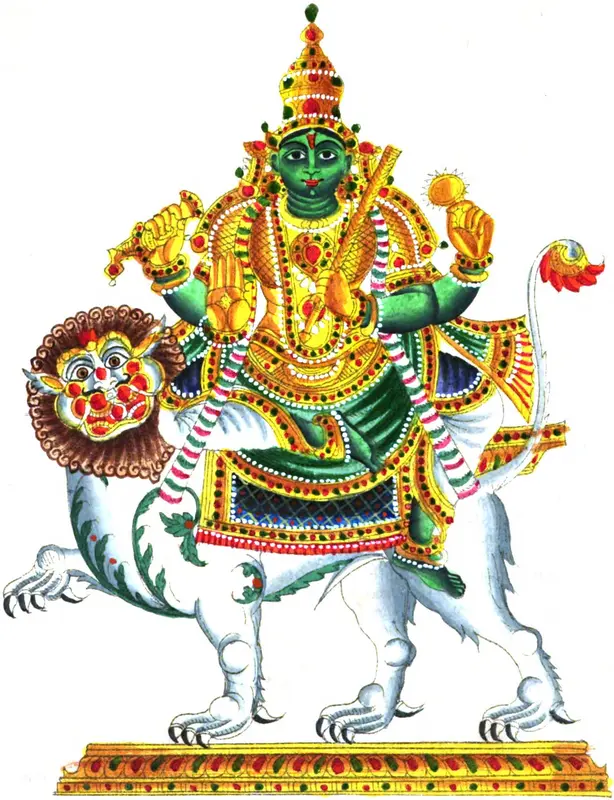
प्रियंगुकलिकाश्यामं रुपेणाप्रतिमं बुधम् I
सौम्यं सौम्यगुणोपेतं तं बुधं प्रणमाम्यहम् II
I humbly bow to Lord Budha, adorned in the verdant hue akin to the Kadamba tree’s tender bud. With a peerless form radiating gentleness and divine virtues, you stand before me.
Buddha, depicted as youthful and alluring, graces with charisma and a diverse array of aptitudes, though confidence eludes him. His fondness for green attire is apparent, resonating with the Kadamba bud’s shade. Earth dominates his essence, complemented by a blend of Vaat, Pitta, and Kapha prakriti, along with the Rajogun trait.
Buddha shines with unparalleled intelligence, adept at unraveling any puzzle. Profound mastery resides in his eloquence (Vani) and intellect (Buddhi). Oriented towards the North, his influence extends to Brahmins, royals, maternal uncles, cousins, and adopted offspring, with his left ear serving as a primary sensory conduit. His realms encompass playfields, craftsmen, messengers, traders, wordsmiths, scribes, accountants, and more. Emeralds are linked to him as gemstones, while Garuda and Parrot symbolize his being. His domain further includes leaves, vegetables, brass, and mercury.
Jupiter:
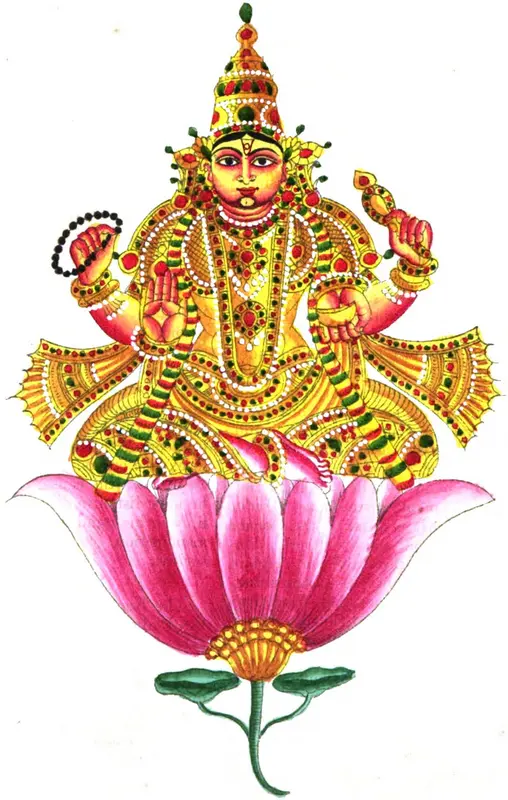
देवानांच ऋषीनांच गुरुं कांचन सन्निभम् I
बुद्धिभूतं त्रिलोकेशं तं नमामि बृहस्पतिम् II
I bow before you, Lord Brihaspati, the revered guide of Devas and sagacious seers, radiant as precious gold. You epitomize wisdom and enlightenment across the realms of existence.
Brihaspati, the celestial preceptor of Devas, boasts a robust and solid physique, radiating vigor and health. He wields profound mastery over the Vedas and Shastras, embodying the very essence of righteousness. His attire resonates with shades of yellow and gold. Aligned with the Akash Tatwa, Kapha Prakriti, and Satva guna, Guru stands as a beacon of guidance for kings, nurturing just and righteous rule. He dons the role of a mentor, illuminating the path of Dharma for all seekers. His essence revolves around Gyan (Knowledge), Wisdom, Happiness, and Fortune.
Brihaspati’s domain encompasses the North East direction, Brahmins, Teachers, Gurus, Offspring, Conjugal Bliss, Stability, Triumph, Faith, Royal patronage, Honor, and Reverence. His Karakatwas include Gold, Yellow Sapphire, Turmeric, Sweets, Ghee, and the Peepal Tree.
Venus:
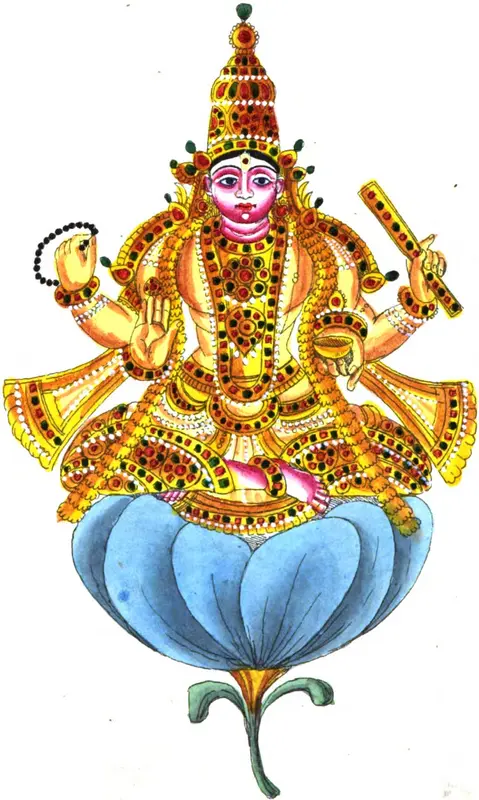
हिमकुंद मृणालाभं दैत्यानां परमं गुरुम् I
सर्वशास्त्र प्रवक्तारं भार्गवं प्रणमाम्यहम् II
I bow to Bhargava, Sukracharya, whose skin exudes the whiteness of snow, jasmine, and the lotus stem. The paramount Guru of the Daityas, he commands mastery over all Sastras.
Shukracharya, Guru of the Daityas, stands of moderate stature with fair skin, captivating large eyes, and a cascade of thick, curly black hair. He revels in the arts and opulence, bedecking himself in exquisite white attire. Shukra is aligned with the Water Element, Kapha-Vaat Prakriti, and Rajoguna. While on par with Brihaspati in wisdom, he forges his unique interpretation of Dharma.
Shukra holds exclusive command over the Mrit Sanjivani Vidya, challenging the dominion of the Devas. His domain intersects with Kaam (Desires), Passions, and Pleasures. Worshiped in the South East direction by Brahmins, he’s invoked for matters involving marriage, spouses, vehicles, luxury, attire, fragrances, music, dance, drama, aesthetics, commerce, verse, and more. Shukra’s karakatwas embrace diamonds, Quartz, while his culinary inclinations lean towards curd, beans, tamarind, and luxurious offerings.
Saturn:
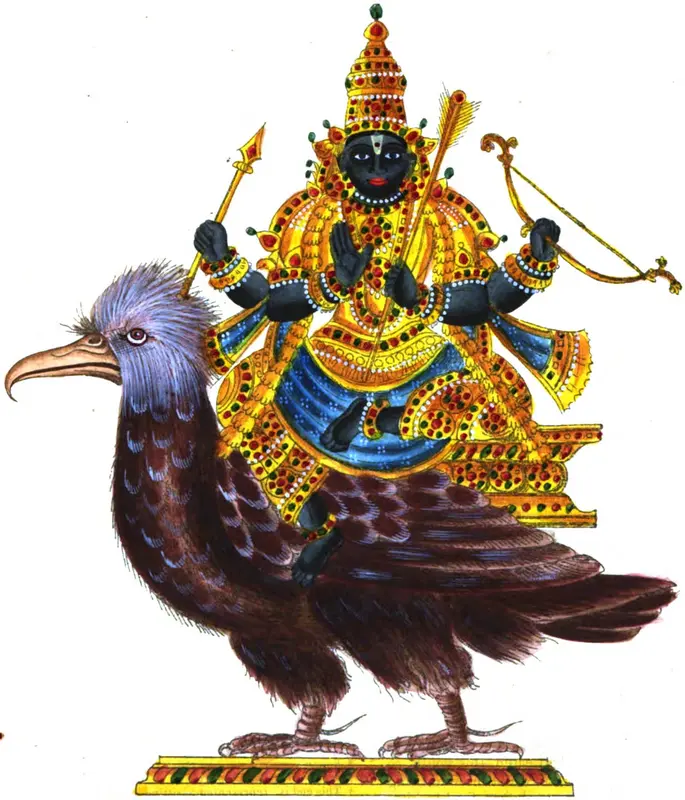
नीलांजन समाभासं रविपुत्रं यमाग्रजम् I
छायामार्तंड संभूतं तं नमामि शनैश्चरम् II
I extend my reverent salutations to Lord Shani (Shanischara), whose form gleams in deep blue hues, resembling the tint of Collyrium. He, the progeny of Surya and Chhaya, stands resplendent with a physique akin to that of Collyrium, and holds the esteemed position of being Yama’s elder sibling, born from the union of Chhaya and Surya (Marthanda).
Shanidev stands tall and thin, his appearance marked by disheveled hair and irregular teeth. His intense, dark eyes and unappealing countenance are often clad in black-blue garments. Governed by the Wind element, Vaat Prakriti, and Tamasik Guna, Shanidev’s role as Karma’s Judge is impartial, not siding with either Devas or Daityas. His spirituality and profound wisdom shine brightly.
Sorrow, servitude, and trials are threads interwoven with Shanidev’s realm. He gazes towards the West, revered by those in service industries and Shudras. His influence extends over domains of longevity, career, profession, job, advancements, courts, incarcerations, physical deformities, hardship, and poverty. His karkatwas embrace blue sapphire, iron, mustard seeds, sesame oil, petrol, and the color black.
Rahu:
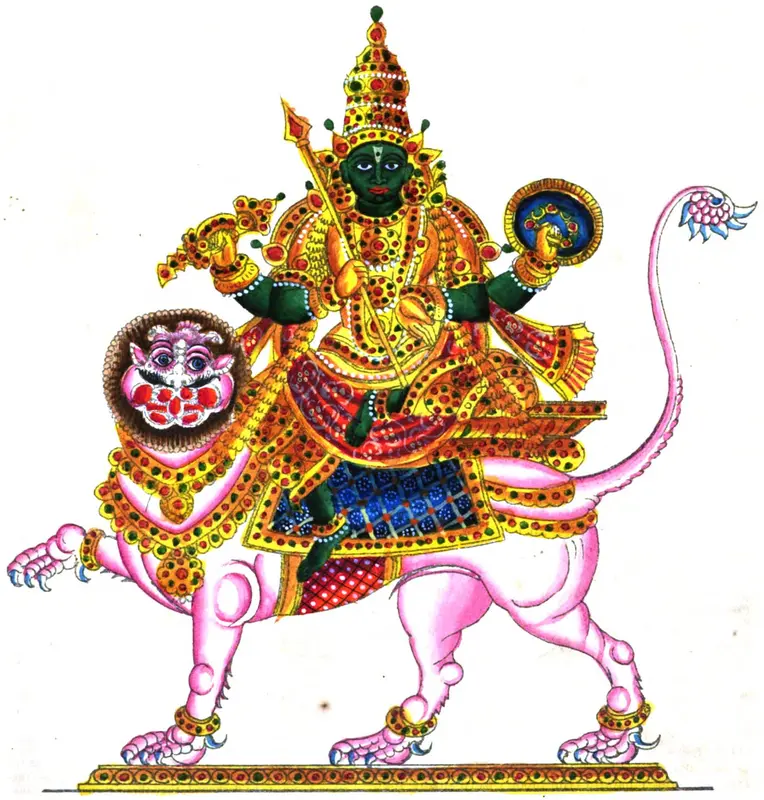
अर्धकायं महावीर्यं चंद्रादित्य विमर्दनम् I
सिंहिकागर्भसंभूतं तं राहुं प्रणमाम्यहम् II
I pay my respects to Lord Rahu, possessing a torso that is halved, emanating immense courage and symbolizing authority. He wields the power of obstruction over the Sun and the Moon. Born of Simhika, the sister of Demon Hiranyakashipu, Rahu stands before us.
Rahu, a severed head of the Asura Swarnbhanu that ingested the divine Amrita, embodies a daring, boundary-defying spirit. He possesses the acumen to delve into hidden realms of knowledge and secrecy. As a harbinger of illusions, Rahu reigns over domains of politics, diplomacy, strategy, espionage, research, and manipulation. His enmity is directed towards the Sun and Moon.
Rooted in materialism, Rahu’s realm encompasses the South West direction. His purview extends to outcasts, spies, investigators, hackers, conspirators, politics, cinema, narcotics, and international matters. Rahu’s influence can herald abrupt triumphs or setbacks, occasionally sparking scandals or bestowing extraordinary aptitudes. Yet, he also incites amoral actions, transgressions, servitude, pilferage, and deception. His karkatwas embrace Gomedha, jackfruit, onion, the Palmyra tree, insects, snakes, poisons, medications, epidemics, and more.
Ketu:
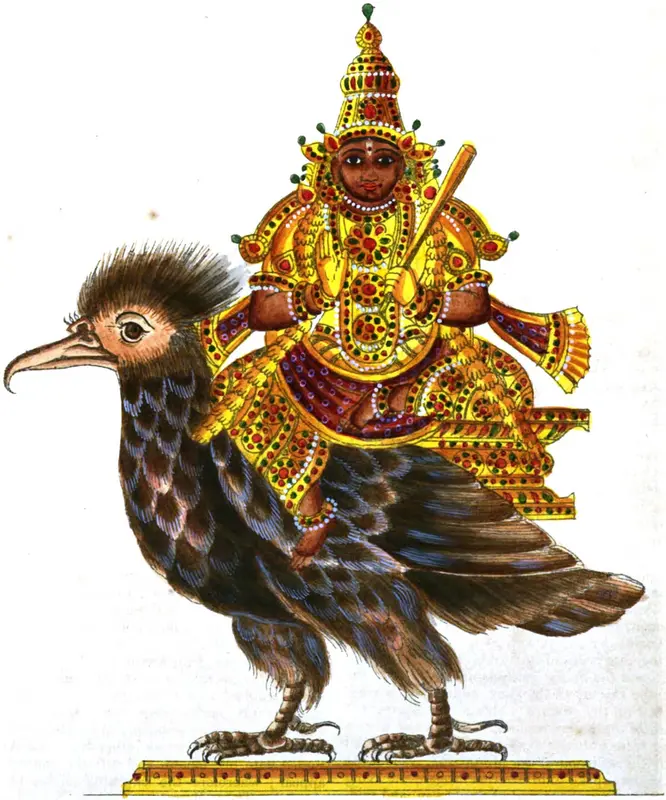
पलाशपुष्पसंकाशं तारकाग्रह मस्तकम् I
रौद्रंरौद्रात्मकं घोरं तं केतुं प्रणमाम्यहम् II
I respectfully bow before you, Lord Ketu, reminiscent of Palasha blossoms, a guardian of celestial trajectories and planetary dance. Your formidable and potent presence strikes dread into the hearts of the malevolent.
Ketu embodies the form of Swarnbhanu, its headless aspect intertwining spirituality and zealotry. His robust presence is draped in smoky-hued garments. Ketu’s essence grants Siddhis and intuition to those treading the spiritual path, while posing considerable threat to the materialistic-minded. It’s believed that he can swiftly usher in obscure and incurable ailments.
Spirituality, Moksha, enlightenment, and salvation resonate with Ketu’s domain. His associations branch into military, terrorism, slaughter, assassination, Siddhas, and ascetics. Cat’s eye gem, Kusha grass, goats, horse gram, cigars, and cigarettes are indicative of his realm.
Table for Navgraha Karkatwa:
| Graha | Karakatwas |
| Sun | Manas, Emotions, Love, Kindness, Mother, Popularity, Rivers, etc. |
| Moon | Satva, Courage, Fire, Warfare, Military, Security, Brother, Lands, etc. |
| Mars | Buddhi, Intelligence, Communication, Friends, Skills, Business, etc. |
| Mercury | Gyan, Wisdom, Dharm, Guru, Elders, Fortune, Stability, etc. |
| Jupiter | Maya, Materialism, Illusion, Traps, Bondages, Losses, Sudden, Hidden, etc. |
| Venus | Dukh, hard work, Service, Trials, Failures, Longevity, Servants, etc. |
| Saturn | Kama, Passion, Beauty, Fine Arts, Fashion, Luxury, Marriage, Wife, etc. |
| Rahu | Maya, Materialism, Illusion, Traps, Bondages, Losses, Sudden, Hidden etc. |
| Ketu | Adhyatm, Detachment, Freedom, Siddhis, Moksh, etc. |
Natural Benefic and Natural Malefic:
In the realm of astrology, Jupiter and Venus retain their status as permanent benefic planets, providing positive influences. Meanwhile, the Moon and Mercury are recognized as conditional benefic planets, with the Moon’s potential as a benefic diminished when situated in proximity to the Sun, particularly during Amavasya, rendering it mildly malefic. Similarly, Mercury, while fundamentally beneficial, might exhibit mild malefic traits when united with natural malefic planets.
In contrast, Rahu, Saturn, Ketu, and Mars are firmly established as natural malefic planets, bearing potential for adverse impacts. The Sun, in astrology, holds the position of a gentle malefic planet, capable of producing moderate negative effects.
Functional Benefic and Functional Malefic:
The inherent characteristics of each celestial body can be temporarily modified based on its positioning at the time of birth and its control over specific astrological houses.
The rulers of the 1st, 5th, and 9th houses are regarded as favorable influences, even if they possess negative innate qualities.
Conversely, the rulers of the 3rd, 6th, and 11th houses are seen as unfavorable, despite any positive inherent traits they may have.
When a celestial body gains control over both the angular and trine houses, it attains the status of a Yogakaraka, becoming the most auspicious celestial body.
Given that the Ascendant (Lagna) controls both angular and trine houses, the ruler of the Ascendant (Lagnesh) is always a Yogakaraka.
For Capricorn and Aquarius ascendants, Venus functions as the Yogakaraka; for Taurus and Libra ascendants, it is Saturn; and for Cancer and Leo ascendants, Mars takes on this role. These six ascendants possess an additional Yogakaraka, a characteristic absent in the other six ascendants.
The Yogakaraka plays a pivotal role in the establishment and realization of significant astrological combinations within a birth chart.
Aspects of Navgraha:
In the realm of astrology, the facet of a celestial body delineates its sway upon fellow celestial entities or distinct sectors of the astrological chart contingent upon the juxtapositions of said celestial bodies in relation to one another.
The cosmic bodies cast their gaze upon the 7th house, each from their celestial vantage points. Sun and Moon extend their influence, while Mars projects its power onto the 4th, 7th, and 8th abodes. Mercury lends its touch to the 7th house, while Jupiter, in its expansive stance, radiates its influence over the 5th, 7th, and 9th realms. Venus, too, directs its attention to the 7th house, as Saturn casts its commanding gaze over the 3rd, 7th, and 10th dwellings from its astral throne.
These configurations provide insights into the domains of life influenced by the celestial bodies and the dynamics they create within the horoscope.
Within Vedic astrology, divergent viewpoints exist regarding the aspects of Rahu and Ketu. Certain practitioners hold that Rahu and Ketu lack inherent aspects, while others bestow them with distinctive influences.
Nonetheless, the prevailing consensus among astrologers is that Rahu and Ketu lack exclusive individual aspects. Instead, they assimilate the influences of the planets they associate with or the houses they inhabit.
Conclusion:
Grahas, or celestial bodies commonly referred to as planets, form a fundamental cornerstone of astrology. Vedic astrology recognizes a collection of nine Grahas: Sun, Moon, Mars, Mercury, Jupiter, Venus, Saturn, Rahu (North Lunar Node), and Ketu (South Lunar Node).
The significance of Grahas in astrology is rooted in their capacity to mold and exert influence over various dimensions of an individual’s life. These Grahas hold sway over diverse aspects like character, relationships, profession, and well-being, and their intricate interactions contribute to the complexity of their impact.
The arrangement of these Grahas within an individual’s birth chart, or horoscope, yields valuable insights into their character, strengths, vulnerabilities, and potential triumphs.
Beyond revealing personal traits and inclinations, the Grahas serve as tools for forecasting forthcoming occurrences and offering counsel for decision-making. Astrologers scrutinize the Grahas’ positions and interconnections to discern potential hurdles and opportunities across realms such as vocation, companionships, and finances.
In essence, the significance of Grahas in astrology is embedded in their ability to furnish understanding into various facets of an individual’s life, offering navigational assistance for decision-making and personal maturation. By grasping the positions and influences of the Grahas in their birth chart, individuals can attain profound self-awareness and make enlightened choices regarding their life’s trajectory.
I aspire for this article to provide you with assistance. Should you discover value within these words, kindly contemplate sharing them with your loved ones. I invite you to spare a moment to offer your thoughts and appraisals below. For further remarkable content akin to this, I encourage you to delve into our website. Additionally, I extend an invitation to subscribe to my YouTube channel for forthcoming materials of similar nature. Lastly, feel unrestrained to establish a connection with me through social media. Wishing you a splendid day ahead!
हरि ॐ तत्सत्
FAQs:
Frequently Asked Questions (FAQs) about Navgrahas:

